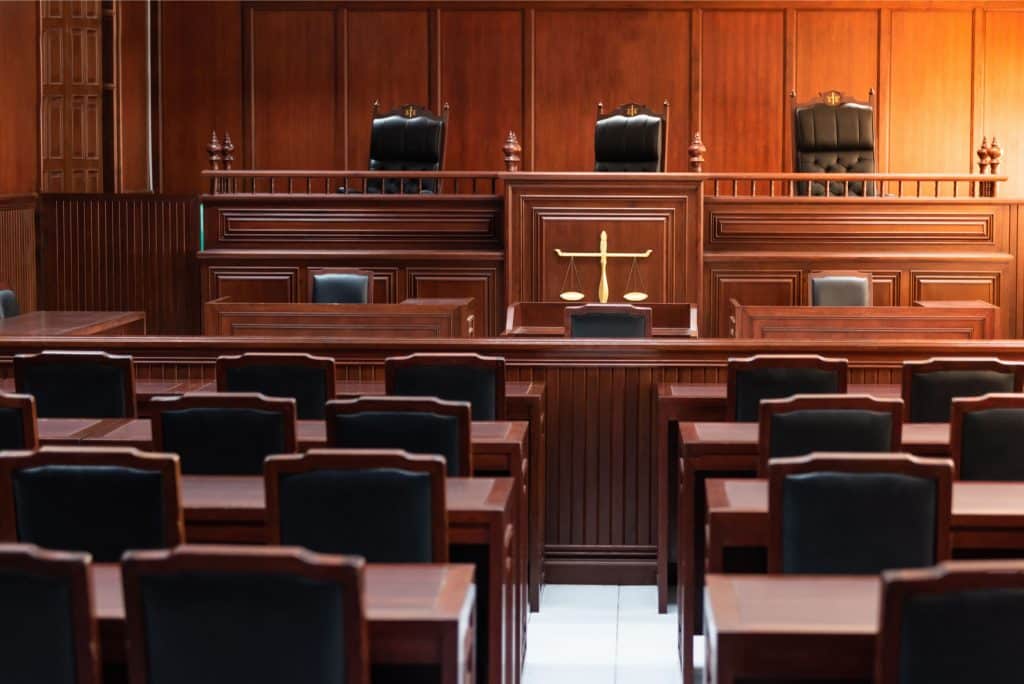How to Remove Malicious Articles and Accounts on Facebook and the Legal Responsibilities

Every day, a vast number of posts are made on Facebook, a global platform. Among these posts, there are malicious ones that can lead to defamation, privacy infringement, and reputational damage.
As one of the world’s largest social networking sites, Facebook has a wide range of users of all ages. Therefore, the damage caused by such malicious posts is not insignificant.
In this article, we will discuss the legal responsibilities of posting malicious content on Facebook and introduce methods to remove such posts.
What is Facebook?
Facebook[ja] is one of the world’s largest social networking sites, operated by Meta. The principle of Facebook account registration is real-name registration, and registered users can post their own articles, check their friends’ articles, and send and receive messages.
The range of public visibility for articles posted on Facebook can be freely chosen from options such as ‘public’ or ‘friends only’. However, if an article is made public, there is a feature that allows others to share it, so there is a possibility that the published article may spread rapidly.
Furthermore, even if it is not actually spreading on Facebook, there is a risk that users who search for individual or company names on search engines like Google or within Facebook may come across negative posts.
What are malicious posts on Facebook?

What kind of malicious posts can be found on Facebook? Here are some examples of such posts.
Examples of negative posts against individuals
“A (real name) of ââ Corporation is a terrible person who constantly harasses his subordinates.”
While the truth of the matter is unclear, making such negative posts with specific names and company names can potentially harm the reputation of the individual or company in question.
Examples of negative posts against companies
“I was forcibly solicited by Company B’s beauty salon and they refused my request for a cooling-off period.”
This could be a post made out of spite by someone who had some sort of trouble with Company B. If such negative content is posted on Facebook, even if it’s not true, the company in question may suffer damage such as a decrease in customers due to a tarnished image.
Other baseless slander and rumors
Facebook requires users to register with their real names, but there may be people who register accounts with random names and post slanderous or rumor-spreading articles about specific companies or individuals. However, just like when slanderous or rumor-spreading posts are made on anonymous bulletin boards like 5channel (formerly 2channel), there are ways to remove these posts.
Related article: How to request deletion of posts on 5channel (formerly 2channel)[ja]
Legal Responsibility for Posting Malicious Content on Facebook
The legal responsibilities that may be incurred when posting malicious content on Facebook can be broadly divided into criminal liability and civil liability.
Criminal Liability
Depending on the content of the post, the following are particularly likely to be problematic:
- Publicly stating facts that lower a person’s social reputation: Defamation under Japanese Criminal Law
- Publicly insulting a person (without stating facts): Insult under Japanese Criminal Law
- Spreading false information that damages a person’s credit: Credit Defamation under Japanese Criminal Law
- Spreading false information that interferes with a person’s business: Obstruction of Business under Japanese Criminal Law
Such actions are crimes and may be subject to penalties such as imprisonment or fines.
Related article: What are the cases where online slander corresponds to Credit Defamation and Obstruction of Business?[ja]
Civil Liability
In civil law, the following are mainly considered as torts:
- Publicly stating facts that lower a person’s social reputation: Defamation
- Damage to a person’s honor: Infringement of Honor
- Infringement of a person’s privacy: Infringement of Privacy Rights
If you commit such torts, you may be liable for damages or apology advertisements to the victim.
Related article: What are the conditions for suing for defamation? Explaining the recognized requirements and the average compensation[ja]
Related article: Thorough explanation of Privacy Rights. What are the three infringement requirements?[ja]
How to Remove Malicious Posts on Facebook
If a malicious post like the one mentioned above is posted on Facebook, there are two main ways to request its removal:
- Request for removal due to violation of terms of use
- Request for removal due to illegality
How to Request Removal for Violation of Facebook’s Terms of Use
First, if you believe that the malicious post violates Facebook’s terms of use, you can directly request Facebook to remove the post. The procedure is as follows:
How to report | Facebook Help Center[ja]
- Navigate to the post you want to report.
- Click on the
in the top right corner of the post.
- Click [Report Post].
- To submit feedback, click the option that best describes how this post violates Facebook’s Community Standards[ja]. Click [Next].
- Depending on the content of your feedback, you will be able to submit a report to Meta. While reporting is not necessary for some types of content, your feedback will be used to improve the system. Click [Done].
Note that Facebook’s Community Standards list in detail the actions that are prohibited as “Bullying and Harassment[ja]“.
For example, a post stating “A (real name) of Company X is a terrible person who regularly harasses his subordinates.” could potentially be considered an “expression of insult or disgust” in violation of the Community Standards on “Bullying and Harassment[ja]“.
Also, a post stating “I was forcibly solicited by Company B’s beauty salon and they refused to accept my request for a cooling-off period.” could potentially violate the Community Standards on “Fraud and Deception[ja]” if it is false.
However, whether or not a post violates the Community Standards or the terms of use is determined solely by Facebook, so just because you request removal does not necessarily mean they will comply.
Therefore, in addition to violating the terms of use, there is a method to legally request the removal of an article on the grounds that it is illegal.
How to Request Removal on the Grounds of Illegality
Posts like the ones mentioned above may warrant consideration for removal requests on the grounds of illegality, such as defamation or business obstruction, in addition to violating the terms of use.
For example, a post stating “I was forcibly solicited by Company B’s beauty salon and they refused to accept my request for a cooling-off period.” could potentially constitute defamation or business obstruction if it is false, as it specifically cites facts that violate the Specified Commercial Transactions Law and other laws.
When requesting removal on the grounds of illegality, you will primarily argue that the post constitutes a crime or other illegal act as mentioned above. However, these arguments require highly specialized knowledge and judgment, so we recommend consulting a lawyer who is experienced in dealing with online issues such as defamation.
However, it is difficult for Facebook to determine whether a post is truly illegal, and even if it is, Facebook is not legally obligated to comply with such removal requests. Therefore, the procedure through the court, which has legal binding power to force Facebook to remove the post, is the “provisional disposition” explained below.
Removal by Provisional Disposition

There are two main types of legal procedures that can be carried out through the courts: “litigation” and “provisional disposition”. Provisional disposition is a procedure that allows you to secure a situation similar to winning a lawsuit before the lawsuit begins.
In the case of a provisional disposition for the removal of an illegal article, it is a procedure that says, “Let’s decide carefully in a lawsuit whether the article is illegal or not, but if the article is posted all the time while the lawsuit is being conducted, the damage will expand, so for now, let’s assume the article is illegal.” If this provisional disposition is recognized by the court, the article will be “temporarily considered illegal,” and Facebook will be legally obligated to remove it.
In the case of a lawsuit, even if it proceeds smoothly, it often takes about 3 to 12 months, and in some cases, it can drag on for years. On the other hand, if you consult with a lawyer who is strong in internet issues such as defamation, a provisional disposition can often be completed in about 2 to 3 months from the request to removal.
However, since provisional disposition is also a legal procedure through the court, it is necessary to submit evidence to support the claim that it is illegal, not just the claim itself.
For example, in the case of the post “I was forcibly solicited by Company B’s beauty salon and wanted to cool off, but they didn’t accept it,” in order to argue that it does not meet the requirement of “truthfulness,” which is exceptionally denied in the establishment of defamation, you would need to submit evidence such as:
- A manual on beauty salon solicitation
- Contract explanation documents
- A manual on cooling off
And argue that “our company does not forcibly solicit beauty treatments and responds appropriately when asked to cool off.”
Related article: What is the important ‘provisional disposition for removal’ in defamation measures?[ja]
Identifying the Poster (Request for Disclosure of Sender Information)
Although Facebook operates on the principle of real-name registration, there are instances where users register under pseudonyms or use impersonation accounts. Even in such cases, it is possible to identify the poster by utilizing a procedure called a request for disclosure of sender information, regardless of whether they are using a pseudonym or impersonating someone else.
The request for disclosure of sender information is a procedure stipulated in Article 5, Paragraph 1 of the Japanese Provider Liability Limitation Act. Generally, the following steps are taken:
- Request the content provider (CP) to disclose information such as the poster’s IP address (provisional disposition).
- Identify the Internet Service Provider (ISP) with whom the poster has a contract based on the disclosed IP address from the CP, and request the ISP to disclose information such as the poster’s name and address (lawsuit).
If the poster can be identified through the above series of procedures, it is also possible to claim damages for mental distress caused by the post and for legal fees incurred in identifying the poster.
Related article: What is a request for disclosure of sender information? A lawyer explains the method and points to note[ja]
In the past, the problem with the above series of procedures for requesting the disclosure of sender information was that the procedures had to be carried out separately for the CP and the ISP. Furthermore, the request for disclosure to the ISP required a lawsuit, not a provisional disposition, which meant that it could take about half a year (or even longer in some cases) to identify the poster.
However, with the amendment of the Japanese Provider Liability Limitation Act in Reiwa 3 (2021), a new system (application for an order to disclose sender information) was established on October 1, Reiwa 4 (2022). If certain conditions are met, it is now possible to identify the poster more simply and quickly.
Related article: Explanation of the “Order for Disclosure of Sender Information” that started on October 1, Reiwa 4 (2022) – Speeding up the identification of posters[ja]
How to Request the Removal of a Fake Facebook Account
While Facebook operates on the principle of real-name registration, there are accounts that misuse others’ names, photos, and so on, impersonating them.
Such “impersonation” not only violates the terms of use, but in some cases, it can also be considered illegal due to defamation or infringement of portrait rights.
Therefore, it is possible to request the suspension, deletion of the impersonating account, or the removal of posts through methods such as the disclosure of sender information, as mentioned above.
Related article: A Lawyer Explains Impersonation and Hijacking on Facebook and How to Counteract Them[ja]
Conclusion: Consult a Lawyer for Online Defamation Issues
Facebook operates on the principle of real-name registration, but it is not uncommon for negative posts to be made against individuals or companies. Moreover, due to the large number of users, the reputational damage caused by such posts is not insignificant.
For malicious posts, you can report violations to Facebook. Even if you report a violation and the post is not removed, there may be cases where it is better to request removal through a court or to identify the poster.
However, making legal claims such as defamation without the help of a lawyer can be quite challenging. If you are troubled by defamatory or damaging posts on Facebook, consulting with a knowledgeable lawyer early on can help you handle the situation more smoothly.
Introduction to Our Firm’s Measures
Monolith Law Office is a legal office with extensive experience in both IT, particularly the internet, and law. In recent years, information related to reputational damage and defamation spread on the internet has been causing serious harm as a “digital tattoo”. Our firm provides solutions for dealing with these “digital tattoos”. Details are provided in the article below.
Areas of expertise at Monolith Law Office: Digital Tattoo[ja]
Category: Internet

 in the top right corner of the post.
in the top right corner of the post.



















